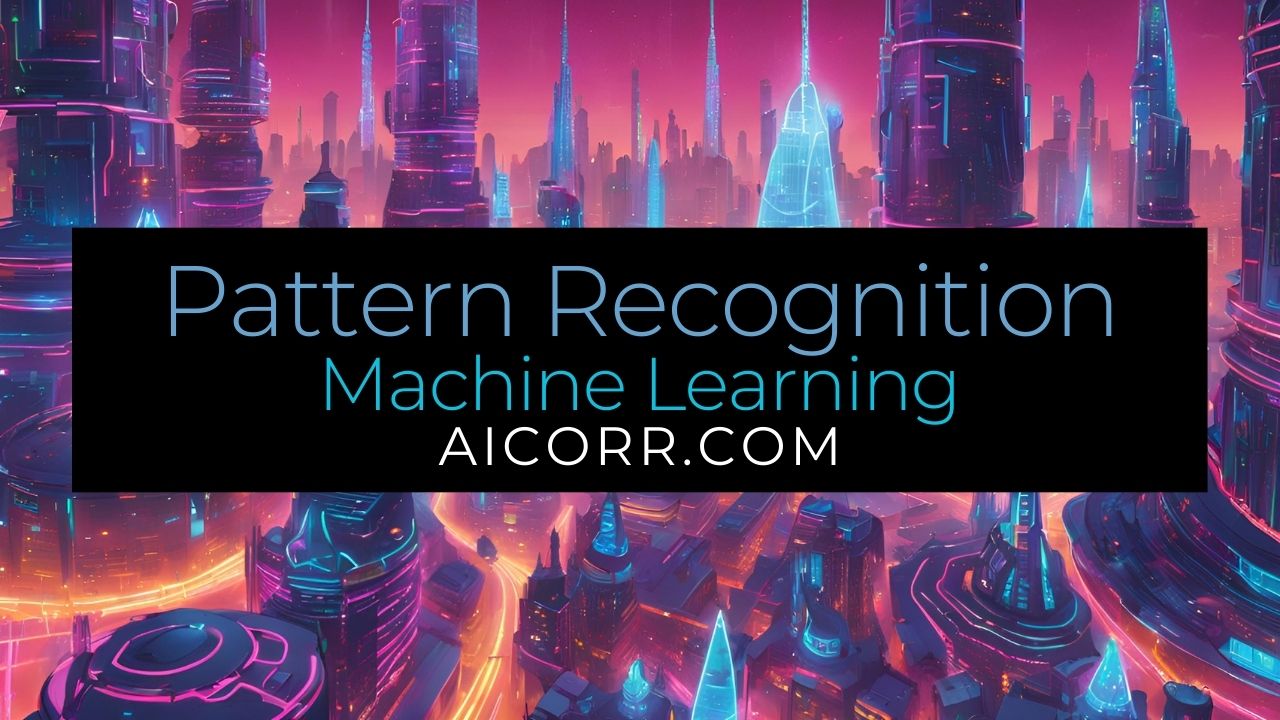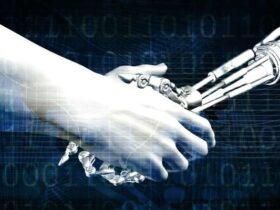Aicorr.com explores what is pattern recognition in machine learning. The team dives into the various features and characteristics of the concept (see table of contents below).
Table of Contents:
- Pattern Recognition in ML
Pattern Recognition in ML
Nowadays, vast amounts of data are generated every second, presenting both a challenge and an opportunity. Analysing these data streams manually is impractical, so technology has evolved to automate the process, and at the heart of this development lies pattern recognition. In the field of machine learning, it enables systems to identify regularities or recurring structures in data and to make predictions or decisions based on them. From facial recognition and language processing to medical diagnoses and financial forecasting, pattern recognition is a crucial element of intelligent systems, transforming how we interact with information and make decisions.
In this article, the team of AICorr explores the fundamentals of pattern recognition, the various approaches and techniques in machine learning, applications across diverse fields, and the challenges faced in creating reliable systems.
Pattern Recognition Objectives
Pattern recognition is a branch of machine learning focused on identifying structures or patterns within data to categorise, interpret, and predict outcomes. The aim is to make sense of large datasets by distinguishing among various patterns to classify objects, words, signals, or images into pre-defined or dynamically created categories.
Key Objectives
- Categorisation and Classification – assigning data points to defined categories (e.g., categorising emails as spam or non-spam).
- Data Interpretation – recognising specific sequences or characteristics within datasets that provide meaningful insights.
- Prediction – making informed forecasts based on observed patterns in past data.
This process can significantly improve automated decision-making, from predicting user behavior to diagnosing diseases based on patient data. The potential applications are vast, which is why pattern recognition is so deeply integrated into modern machine learning.
Approaches to Pattern Recognition
Pattern recognition techniques can be broadly categorised based on the type of learning involved. There are four different types of learning: supervised learning, unsupervised learning, semi-supervised learning, and reinforcement learning.
- Supervised Learning: Supervised learning involves training a model on labelled data, where the outcomes or classes are predefined. Algorithms in this category learn from these examples and are then tested on new, unlabelled data. Techniques like Support Vector Machines (SVMs), decision trees, and neural networks are widely used for supervised recognition tasks.
- Unsupervised Learning: Unlike supervised learning, unsupervised learning algorithms work with data that lacks labels. These methods aim to find patterns or groups based on similarities, often through clustering techniques such as K-means clustering or hierarchical clustering. Unsupervised learning is useful when data labels are unavailable or expensive to obtain.
- Semi-Supervised Learning: A hybrid approach, semi-supervised learning combines a small set of labelled data with a larger set of unlabelled data. This approach is beneficial when labelled data is limited or costly, as in medical imaging or language translation.
- Reinforcement Learning: Reinforcement learning allows an algorithm to learn through rewards or penalties in response to its actions, ultimately seeking to maximise cumulative rewards. This method is effective for sequential decision-making problems, such as robotics or game-playing, where the system needs to optimise a series of actions.
Techniques in Pattern Recognition
The techniques and algorithms used in pattern recogintion are diverse, each suited to different types of data and objectives.
- Classification: Classification methods are used when data needs to be assigned to predefined categories. Popular algorithms include:
- Support Vector Machines (SVM): SVMs classify data by finding a hyperplane that maximises the margin between classes.
- k-Nearest Neighbors (k-NN): This technique categorises data based on the majority class of its closest neighbors.
- Decision Trees: A tree structure where each node represents a decision based on a feature, which is useful for both classification and regression.
- Clustering: Clustering algorithms group data into clusters based on similarity. K-means clustering, for instance, partitions data into clusters by minimising the variance within each cluster.
- Neural Networks and Deep Learning: Neural networks, particularly deep learning models, are capable of detecting complex patterns within data. Convolutional Neural Networks (CNNs) are effective for image data, while Recurrent Neural Networks (RNNs) and their variants, such as Long Short-Term Memory (LSTM) networks, are useful for sequential data, like language or time-series data.
- Bayesian Networks: These probabilistic models represent a set of variables and their conditional dependencies, often used in situations involving uncertainty or incomplete information.
- Hidden Markov Models (HMMs): HMMs are particularly useful for time-series data and are commonly used in speech and handwriting recognition.
- Feature Extraction and Selection: Feature extraction involves identifying the most significant characteristics of data that contribute to pattern recognition. Techniques like Principal Component Analysis (PCA) and Linear Discriminant Analysis (LDA) are used to reduce dimensionality and focus on the most relevant features.
Real-World Applications
Pattern recognition is applied across many industries, significantly enhancing efficiency and accuracy. We look at image and speech recognition, natural language processing, medical imaging, and financial forecasting.
Image and speech recognition applications rely heavily on pattern recognition. For instance, convolutional neural networks have transformed image processing tasks such as facial recognition and object detection. In speech recognition, pattern recognition allows systems to interpret spoken language, as seen in virtual assistants like Siri and Alexa.
Furthermore, natural language processing (NLP) applications use pattern recognition for tasks like text classification, sentiment analysis, and machine translation. By recognising linguistic patterns, NLP systems can extract meaningful information from text, aiding in customer service, social media analysis, and more.
In addition, pattern recognition is crucial in medical imaging, such as analysing X-rays or MRIs, to detect abnormalities. By recognising patterns that signify disease, these systems assist healthcare professionals in early diagnosis and treatment planning.
Finally, identifying patterns in financial forecasting helps organisations predict trends in stock prices, market risks, and consumer behaviors. Machine learning models trained on historical financial data are essential for investment and strategic business planning.
Challenges in Pattern Recognition
While pattern recognition offers substantial benefits, certain challenges make implementation complex.
- Noise in Data – real-world data often contains noise, which can obscure patterns and lead to inaccurate predictions.
- High Dimensionality – data with a large number of features can complicate model training and may lead to overfitting, where the model performs well on training data but poorly on new data.
- Data Imbalance – in cases where certain classes are underrepresented, models may become biased toward the majority class, leading to suboptimal performance.
- Computational Complexity – pattern recognition, particularly deep learning, can be computationally intensive, requiring significant processing power and memory.
Evaluating Performance
Evaluating the effectiveness of pattern recognition models requires specific metrics.
- Accuracy: The proportion of correct predictions in the total dataset.
- Precision, Recall, and F1 Score: Metrics that provide insights into model performance, especially useful in imbalanced datasets.
- Confusion Matrix: A visualisation tool that displays true positives, false positives, true negatives, and false negatives.
- ROC and AUC: Receiver Operating Characteristic (ROC) curves and the Area Under the Curve (AUC) help evaluate binary classifiers.
Future Directions
The field of patter recognition is rapidly evolving with advancements.
- Transfer Learning: Applying knowledge from pre-trained models to new, similar tasks.
- Meta-Learning: Focusing on algorithms that learn how to learn, enhancing adaptability to new tasks.
- Explainable AI: Increasing transparency in model decisions, especially in complex neural networks.
- Quantum Computing: Leveraging quantum technology to tackle large-scale pattern recognition problems with faster processing capabilities.












